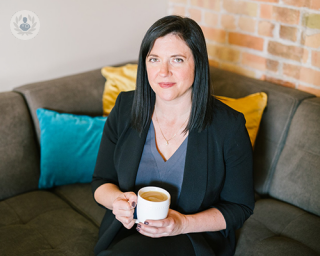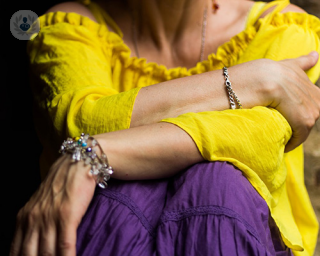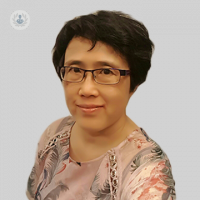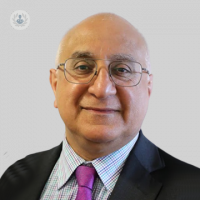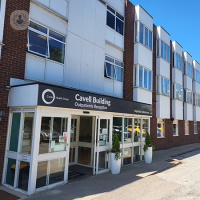Breast cancer
Dr Shiroma De Silva-Minor - Medical oncology
Created on: 11-13-2012
Updated on: 09-18-2023
Edited by: Sophie Kennedy
What is breast cancer?
Breast cancer is a form of cancer that develops in the cells of the breasts, mainly in women but men can also be affected. It is the most common type of cancer in the UK, with approximately one in eight women diagnosed with breast cancer during their lifetime, and around one in 870 men develop it. Although it is the most common form of cancer, the recovery rate is high if the cancer is discovered early.
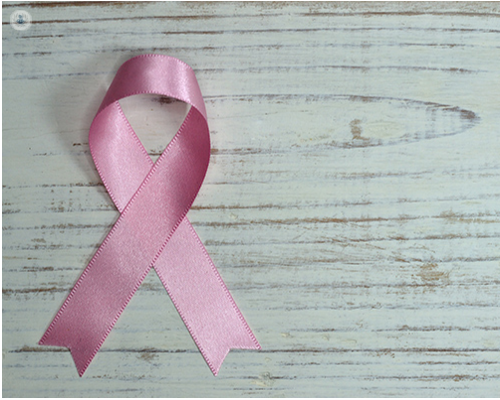
What are the symptoms of breast cancer?
The most notable symptom of breast cancer is the formation of a lump anywhere in the breast area from below the armpits to the centre of the chest. It may appear as a physical lump, or the thickening of breast tissue. Other symptoms include:
- changes in the size or shape of the breasts
- changes in the nipples, including inversion dimpling of the skin of the breasts or armpits
- changes in the colour of the breast, such as visible redness or inflammation
- a rash or crusting around the nipples
- discharge from the nipples
- a sunken area in either of the breasts
- persistent pain in the breast or armpit
Although there are many other reasons that changes may occur in your breasts, it’s important to see your GP or a medical professional when you notice them in order to rule out breast cancer. Should breast cancer be present, the sooner it is found, the more successful treatment is likely to be.
What are the causes of breast cancer?
The causes of breast cancer are not known, however it is understood that there are certain factors that can cause an increase in the risk of developing breast cancer. People who have a higher risk of developing breast cancer include:
- those aged over fifty years old
- those with a family history of breast cancer, particularly those who carry one of several genes associated with the disease, such as BRCA1 and 2
- patients who have previously had breast cancer
- patients who have had a previous benign breast lump
Tall people are slightly more at risk from breast cancer than others as are people who consume alcohol excessively or are overweight or obese.
Can breast cancer be prevented?
As the causes of breast cancer are yet to be fully established, it is unknown if it is possible to completely prevent the condition from developing. Some factors, however, are known to reduce a person’s risk of developing the condition, including:
- exercising regularly
- maintaining a healthy weight
- eating a healthy diet with low amounts of saturated fat
- limited consumption of alcohol
Due to excessive or uncontrolled levels of oestrogen produced following the menopause or after giving birth, a woman’s risk of developing breast cancer may be higher. Therefore, breastfeeding is recommended as this causes a woman’s ovulation to lessen and as such, oestrogen levels are lower. Additionally, following the menopause, women are advised to keep a healthy weight as being overweight or obese also increases levels of oestrogen.
Some people run a higher risk than others of developing breast cancer due to genetic factors and a family history of the condition. If you are determined to have an elevated risk through genetic testing, you may be suitable for medication to help reduce this. Additionally, some women opt to undergo a preventative mastectomy in which the breasts are removed to reduce their elevated cancer risk by up to ninety per cent.
Although complete prevention of breast cancer is not yet possible, self-checking and reporting any changes to your doctor is vital in improving survival rates of the condition; the sooner breast cancer is detected, the more likely treatment will be successful. Breast Cancer UK recommends checking your breasts at home on a monthly basis for any changes. Women over the age of fifty are also invited to attend breast screening appointments (mammogram) approximately every three years to check for any signs of cancer.
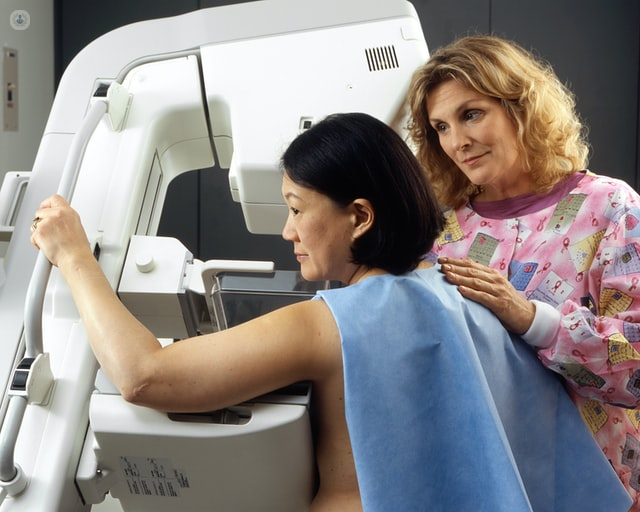
What are the different types of breast cancer?
Cancer can develop in different parts of the breast and in different ways. The most common types of breast cancer are:
Non-invasive breast cancer (carcinoma in situ)
Non-invasive breast cancer forms in the milk ducts within the breast. It does not grow to the normal surrounding tissues. This form of cancer is usually detected with a mammogram, and doesn’t usually show as a lump.
Invasive breast cancer
Invasive breast cancer is the most common form of breast cancer, and also the most dangerous. This form of breast cancer can spread to the surrounding tissues. It often shows as a lump or thickening of the breast tissue.
How can breast cancer develop?
Secondary breast cancer refers to the spreading of the disease to other parts of the body. This can occur through the lymphatic or blood systems of the body and will require additional treatment.
Patients diagnosed with breast cancer undergo a number of tests to establish if their cancer has spread but any unexplained or new symptoms, such as unexplained and persistent nausea, fatigue or breathlessness should be reported to your cancer specialist.
How is breast cancer treated?
It is important to detect breast cancer early, as early detection means that it can be treated more effectively before it is able to spread. Treatment usually consists of three components:
- Surgery to remove part or all of the breast tissue where the cancer is located, known as either a mastectomy to remove the complete breast, or a lumpectomy to remove the lump
- Chemotherapy and/or radiotherapy to kill any remaining cancerous cells follows, along with the possibility of hormone or biological treatments
What is the survival rate of breast cancer?
Survival rates for breast cancer are good and have been steadily improving over the last forty years in the UK, from forty to seventy eight per cent. Seventy six per cent of patients suffering from breast cancer survive the condition for ten years or more.



